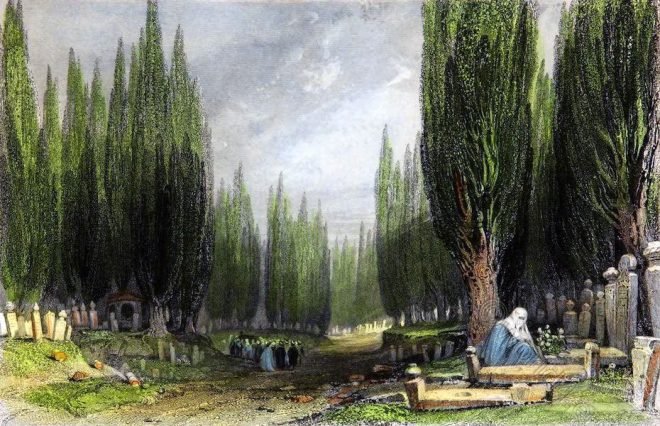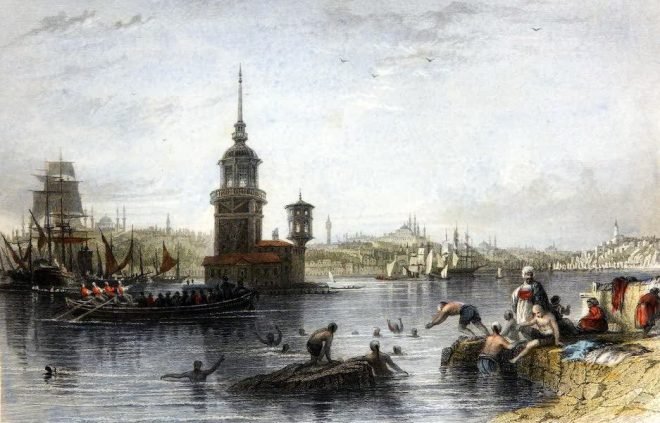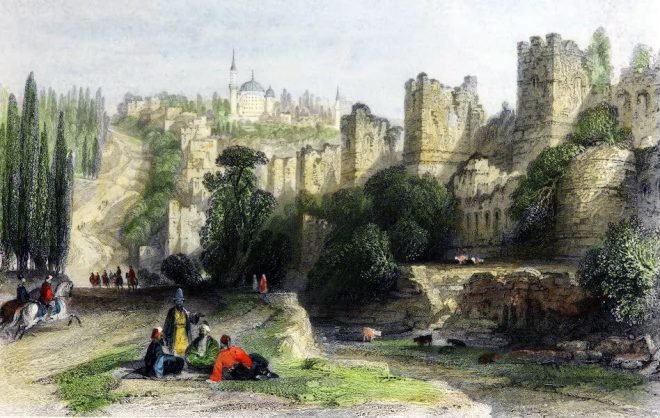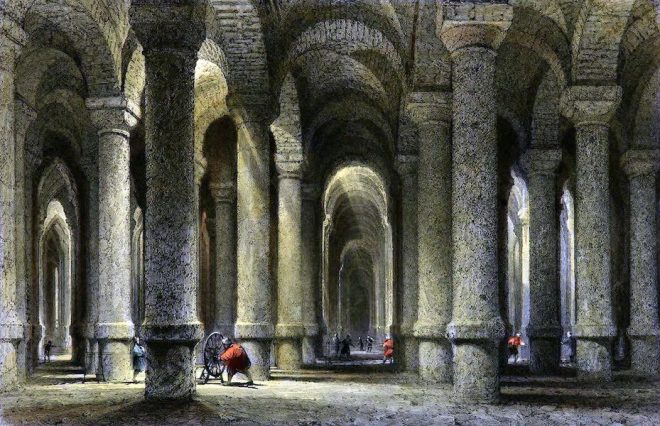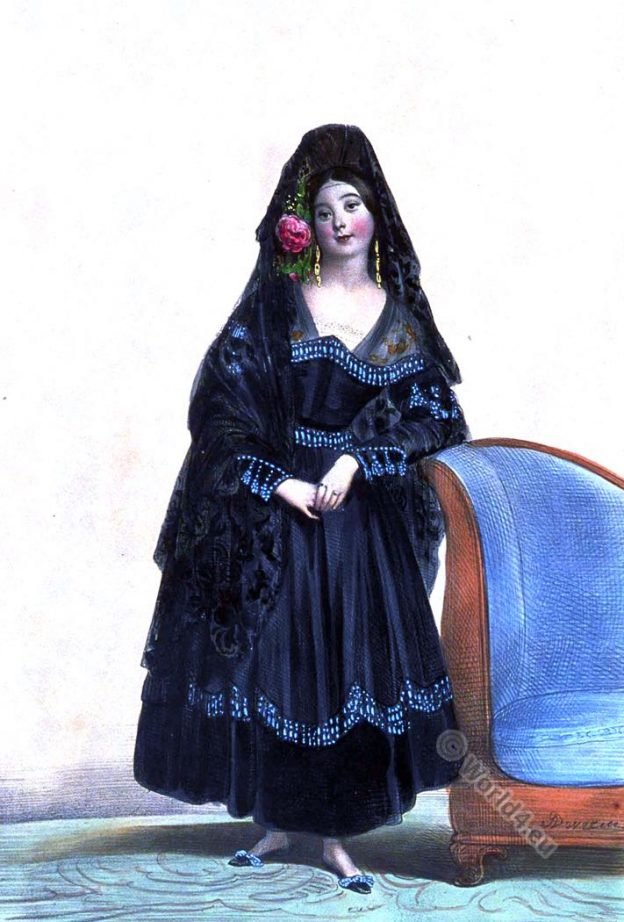View of Jerusalem from a distance. The city is called by the Arabs, El-Kuds (the Holy); and also by Arabian writers, Bek El-Mukaddas (the Sanctuary).
Category: 1839
The Tomb of St. James in the Valley of Jehoshaphat.
The monkish opinion is, that into this cavern the Apostle James retired during the interval between the Crucifixion and the Resurrection.
The Sultan Ahmed Mosque in Istanbul. Known as the Blue Mosque.
The Sultan Ahmed Mosque in Istanbul, built by Sinan’s pupil Mehmet Ağa, is a major work of Ottoman architecture.
The Süleymaniye Mosque in Istanbul of Sultan Suleyman the Magnificent.
The Süleymaniye Mosque (Turkish: Süleymaniye Camii) is one of the great mosques in İstanbul. It was built by order of Sultan Suleyman the Magnificent in a very short construction period between the years 1550 and 1557 and is an important work of the architect Sinan.
The Great Cemetry of Scutari. Turkish necropolis, the cities of the dead.
Scutari cemetry of Istanbul, the former Constantinople. Among the objects which distinguish a Turkish necropolis, is the stone placed to mark the grave.
The Kiz Koulasi. Leander’s, or The Maiden’s Tower on the Bosporus.
The Kız Kulesi is now used as a beacon for ships entering the strait, and boats passing the estuary.
The Theodosian Walls. The Triple Wall of Constantinople.
The Triple Wall of Constantinople. On the Land side, near Top Kapousi. Constantinople and its environs.
The Cistern of Binbirdirek called the Thousand and One Pillars.
The Cistern of Binbirdirek or Cistern of Philoxenos called the Thousand and One Pillars is a man-made subterranean reservoir in Istanbul.
Argentinean landlord. Estanciero. Ġaucho Proprietre 1839.
Ġaucho Proprietre, Province de la Plata
Marie Menessier-Nodier as Spanish lady in Maja costume.
Marie Menessier-Nodier. Femme de lettres. Dame Espagnole en costume de Maja.





